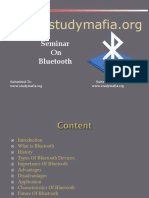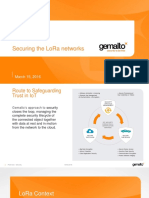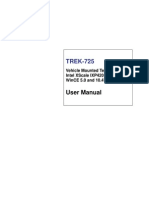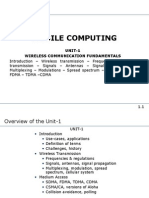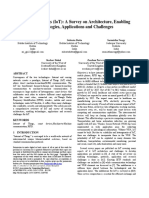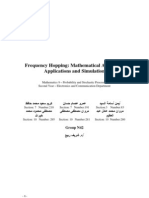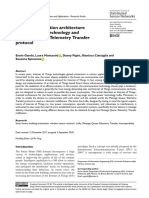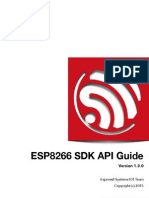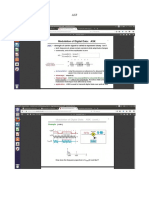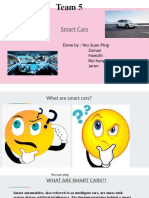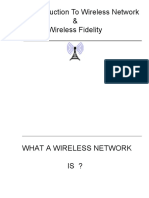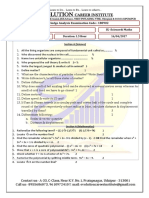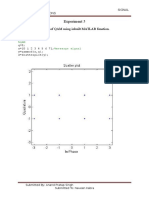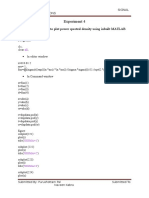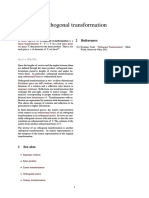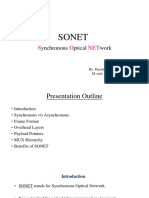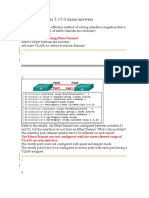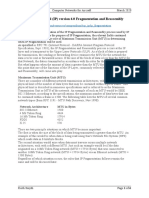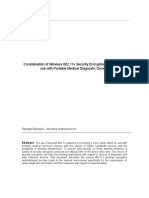0% found this document useful (0 votes)
209 views104 pagesBluetooth Technology
This document provides an overview of Bluetooth technology. It describes Bluetooth as an open wireless technology standard for exchanging data over short distances. It explains that Bluetooth specifications are developed by the Bluetooth Special Interest Group (SIG) to define and promote the technology. The document outlines key aspects of Bluetooth including its architecture, specifications, usage models, and applications. It provides details on Bluetooth's radio technology, baseband protocols, and protocol stack.
Uploaded by
puruCopyright
© © All Rights Reserved
We take content rights seriously. If you suspect this is your content, claim it here.
Available Formats
Download as PDF, TXT or read online on Scribd
0% found this document useful (0 votes)
209 views104 pagesBluetooth Technology
This document provides an overview of Bluetooth technology. It describes Bluetooth as an open wireless technology standard for exchanging data over short distances. It explains that Bluetooth specifications are developed by the Bluetooth Special Interest Group (SIG) to define and promote the technology. The document outlines key aspects of Bluetooth including its architecture, specifications, usage models, and applications. It provides details on Bluetooth's radio technology, baseband protocols, and protocol stack.
Uploaded by
puruCopyright
© © All Rights Reserved
We take content rights seriously. If you suspect this is your content, claim it here.
Available Formats
Download as PDF, TXT or read online on Scribd
/ 104
